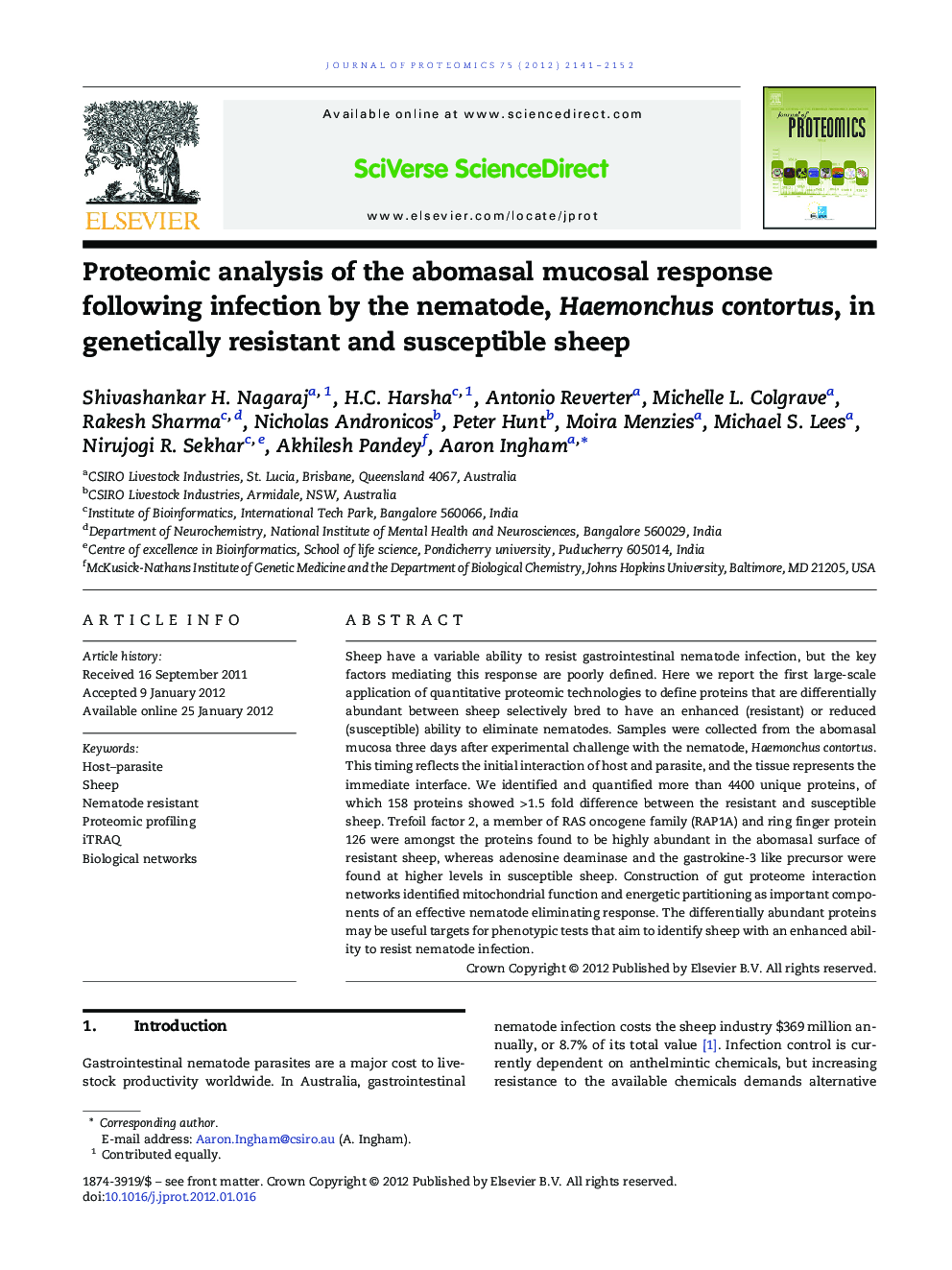| Article ID | Journal | Published Year | Pages | File Type |
|---|---|---|---|---|
| 1225955 | Journal of Proteomics | 2012 | 12 Pages |
Sheep have a variable ability to resist gastrointestinal nematode infection, but the key factors mediating this response are poorly defined. Here we report the first large-scale application of quantitative proteomic technologies to define proteins that are differentially abundant between sheep selectively bred to have an enhanced (resistant) or reduced (susceptible) ability to eliminate nematodes. Samples were collected from the abomasal mucosa three days after experimental challenge with the nematode, Haemonchus contortus. This timing reflects the initial interaction of host and parasite, and the tissue represents the immediate interface. We identified and quantified more than 4400 unique proteins, of which 158 proteins showed > 1.5 fold difference between the resistant and susceptible sheep. Trefoil factor 2, a member of RAS oncogene family (RAP1A) and ring finger protein 126 were amongst the proteins found to be highly abundant in the abomasal surface of resistant sheep, whereas adenosine deaminase and the gastrokine-3 like precursor were found at higher levels in susceptible sheep. Construction of gut proteome interaction networks identified mitochondrial function and energetic partitioning as important components of an effective nematode eliminating response. The differentially abundant proteins may be useful targets for phenotypic tests that aim to identify sheep with an enhanced ability to resist nematode infection.
► Sheep vary in their ability to resist gastrointestinal nematode infection. ► We quantified proteins in nematode resistant and susceptible sheep. ► A resource of over 4000 unique ovine proteins was generated. ► Differentially abundant proteins were identified. ► These proteins may contribute to the elimination of nematodes.Graphical abstractFigure optionsDownload full-size imageDownload high-quality image (54 K)Download as PowerPoint slide
